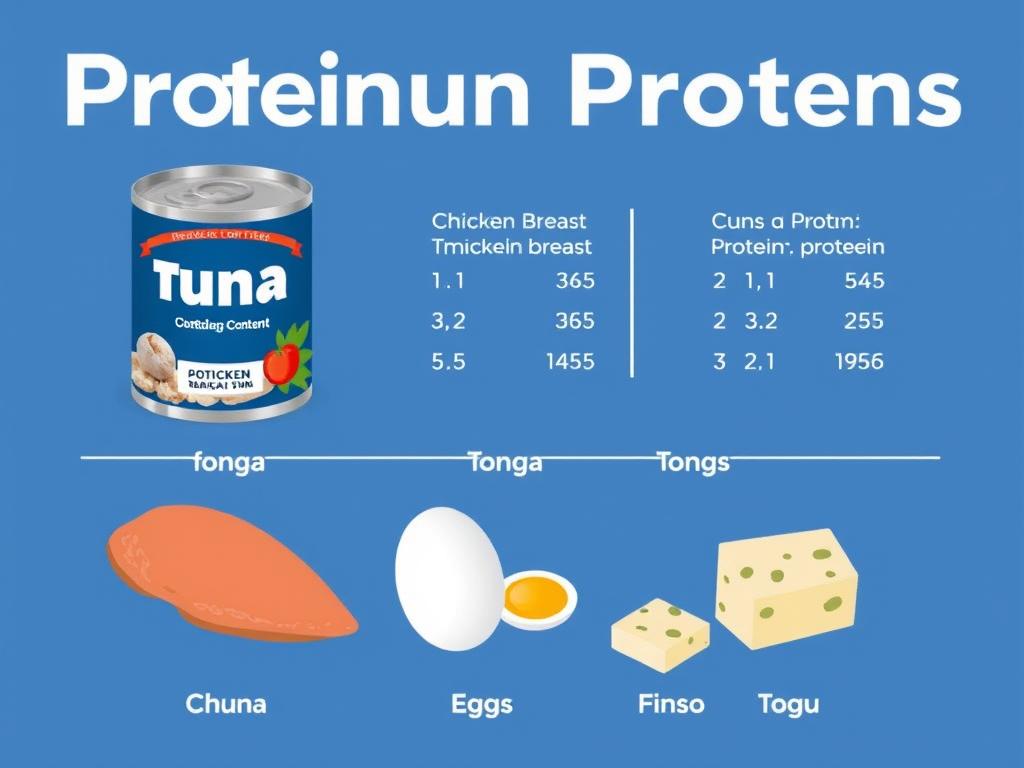Health Benefits of Canned Tuna
Before we address the safety concerns, let’s acknowledge why canned tuna is so popular in the first place. This convenient seafood option offers several impressive nutritional advantages that make it appealing for regular consumption.
Excellent Source of Lean Protein
Canned tuna is a protein powerhouse. A 3-ounce serving provides approximately 22 grams of high-quality protein for just 100 calories. This makes it an excellent option for those looking to increase their protein intake while keeping calories in check.

Rich in Omega-3 Fatty Acids
Tuna contains essential omega-3 fatty acids, particularly EPA (eicosapentaenoic acid) and DHA (docosahexaenoic acid). These nutrients play crucial roles in brain function, heart health, and reducing inflammation throughout the body.
Studies show that omega-3s can help reduce the risk of heart disease, depression, dementia, and arthritis. They’re particularly beneficial for cardiovascular health by lowering triglycerides, reducing blood pressure, and decreasing the risk of irregular heartbeat.
Potential Risks of Daily Tuna Consumption
Mercury Content: The Primary Concern
Health experts caution against daily tuna consumption mainly because of its mercury content. Mercury is a naturally occurring element that can become a neurotoxin when it builds up in the body. Large predatory fish like tuna accumulate mercury from consuming smaller fish, so tuna typically contains higher levels than other seafood options.

Mercury exposure can harm developing nervous systems, so pregnant women, breastfeeding mothers, and young children are advised to be especially cautious about their tuna intake.
| Tuna Type | Mercury Level (ppm) | Mercury (mcg) per 3 oz | Risk Level |
| Light tuna (canned) | 0.126 | 10.71 | Lower |
| Skipjack tuna (fresh/frozen) | 0.144 | 12.24 | Lower |
| Albacore tuna (canned) | 0.350 | 29.75 | Moderate |
| Yellowfin tuna (fresh/frozen) | 0.354 | 30.09 | Moderate |
| Bigeye tuna (fresh/frozen) | 0.689 | 58.57 | Higher |
Sodium Content Considerations
While not as significant a concern as mercury, canned tuna does contain sodium. A 3-ounce serving typically provides around 200-210 mg of sodium, which is moderate but not excessive. However, for those monitoring their sodium intake due to high blood pressure or other health conditions, this is worth considering.
The good news is that many brands offer low-sodium or no-salt-added options, which can contain as little as 50 mg of sodium per serving (about 2% of the daily recommended value).
Sustainability Concerns
Beyond personal health, there are environmental considerations with frequent tuna consumption. Some tuna fishing practices can lead to overfishing and bycatch issues that harm marine ecosystems. Looking for brands with sustainability certifications can help address these concerns.

What Experts Say About Daily Tuna Consumption
“The benefits of consuming seafood, including tuna, far outweigh the risks when consumed in moderation. The key is variety – mixing up your seafood choices rather than consuming the same type every day.”
Health organizations worldwide have weighed in on safe tuna consumption. The FDA and EPA have established specific guidelines to help consumers make informed choices about their seafood intake.
FDA and EPA Guidelines
The Food and Drug Administration (FDA) recommends that most adults eat at least 8 ounces (2 servings) of a variety of seafood per week. However, they classify different types of tuna according to their mercury content:
- Best Choices (Lowest Mercury): Canned light tuna
- Good Choices (Moderate Mercury): Canned albacore/white tuna and yellowfin tuna
- Choices to Avoid (Highest Mercury): Bigeye tuna
For pregnant women, women who may become pregnant, breastfeeding mothers, and young children, the FDA recommends:

- 2-3 servings of canned light tuna per week (from the “Best Choices” list)
- Only 1 serving per week of albacore or yellowfin tuna (from the “Good Choices” list)
- Avoiding bigeye tuna completely
Safer Fish Alternatives for Frequent Consumption
If you enjoy the convenience and nutritional benefits of seafood but are concerned about mercury from daily tuna consumption, consider these lower-mercury alternatives that can be eaten more frequently:

Salmon
Rich in omega-3s and lower in mercury than tuna. Available canned, fresh, or frozen.

Sardines
Excellent source of calcium (with bones) and omega-3s with very low mercury levels.

Trout
Freshwater fish with omega-3 benefits and significantly lower mercury content.
Why Variety Matters
Rotating between different types of seafood not only reduces your exposure to any single contaminant but also provides a broader range of nutrients. Each fish species offers a unique nutritional profile.

Practical Guidelines for Safe Tuna Consumption
Based on expert recommendations and scientific research, here are practical guidelines to help you enjoy tuna safely:
Recommended Serving Frequencies
General Adults
- Canned light tuna: 2-3 servings per week
- Albacore/white tuna: 1 serving per week
- Avoid daily consumption of any type
- Aim for variety in seafood choices
Pregnant/Breastfeeding Women
- Canned light tuna: Up to 2-3 servings per week
- Albacore/white tuna: Limit to 1 serving per week
- Avoid bigeye tuna completely
- Consult healthcare provider for personalized advice
Children (Ages 1-11)
- Canned light tuna: Up to 2 servings per week
- Smaller portion sizes based on age
- Avoid albacore/white tuna when possible
- Avoid bigeye tuna completely
Tips to Reduce Mercury Exposure

- Choose light tuna over albacore: Light or skipjack tuna typically contains less mercury than albacore (white) tuna.
- Check for testing: Some brands like Safe Catch and Wild Planet test their tuna for mercury levels.
- Consider smaller species: Smaller tuna species generally accumulate less mercury than larger ones.
- Rotate seafood choices: Alternate tuna with lower-mercury options like salmon, sardines, and trout.
- Watch portion sizes: Stick to the recommended 3-4 ounce serving size (about the size of a deck of cards).
Is Canned Tuna Safe To Eat Every Day? The Verdict
After reviewing the scientific evidence and expert recommendations, the answer to whether canned tuna is safe to eat every day is: No, daily consumption is not recommended for most people, primarily due to mercury concerns.
However, canned tuna—especially light tuna—can be a nutritious part of your diet when consumed in moderation. For most healthy adults, enjoying tuna 2-3 times per week provides the nutritional benefits while minimizing potential risks.

The key takeaway is balance and variety. Incorporate tuna as part of a diverse seafood rotation rather than a daily staple. This approach allows you to benefit from tuna’s impressive nutritional profile while minimizing any potential risks from mercury exposure.
Remember that individual factors like age, weight, pregnancy status, and overall health can influence what’s optimal for you. When in doubt, consult with a healthcare provider or registered dietitian for personalized recommendations.
Benefits of Moderate Tuna Consumption
- Excellent source of lean protein
- Rich in heart-healthy omega-3 fatty acids
- Convenient and affordable
- Versatile ingredient for many recipes
- Supports brain and heart health
Risks of Daily Tuna Consumption
- Potential mercury accumulation
- Moderate sodium content
- Sustainability concerns with some varieties
- Lack of dietary variety
- Specific risks for vulnerable populations
